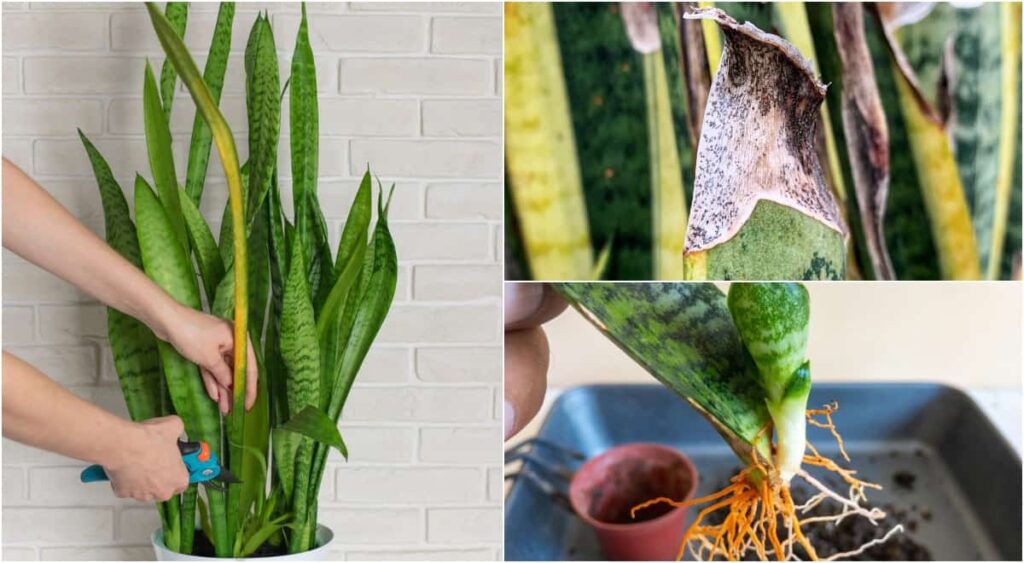Indoor gardening has gained significant popularity in recent years, and for good reason. Not only does it add a touch of freshness and beauty to our living spaces, but it also brings a sense of joy and tranquility. One plant that is particularly renowned for its ability to uplift the environment is The Happy Plant. If you’re new to indoor gardening or simply looking to enhance your indoor oasis, this comprehensive guide will provide you with everything you need to know about The Happy Plant and how to cultivate it successfully.
Understanding the Basics of Indoor Gardening
Before we dive into the world of the happy plant, it’s essential to understand the basics of indoor gardening. Unlike traditional outdoor gardening, indoor gardening is tailored to suit the unique requirements of plants grown indoors. It involves creating an environment that mimics the natural conditions necessary for plants to thrive.
Indoor gardening offers numerous benefits, both aesthetic and psychological. Not only does it enhance the visual appeal of our homes, but it also improves air quality, reduces stress, and boosts mood. Now, let’s explore the importance of indoor plants in more detail. Visit https://sustainable-gardening-tips.com/the-happy-plant-a-perfect-blend-of-greenery-and-cheerfulness/ to get how happy plants are perfect blend of greenery and cheerfulness.
The Importance of Indoor Plants
Indoor plants play a vital role in enhancing the overall ambiance and well-being of our indoor spaces. They act as natural air purifiers, filtering out toxins and releasing oxygen. Moreover, indoor plants have been scientifically proven to improve concentration and productivity, reduce anxiety, and create a calming atmosphere.
When selecting the right plant for your indoor garden, The Happy Plant is an excellent choice due to its distinctive characteristics.

Choosing the Right Plant: The Happy Plant
The Happy Plant, scientifically known as Euphorbia tirucalli, is a stunning succulent that will undoubtedly bring joy and freshness to your indoor oasis. It is native to regions with warm climates and has adapted remarkably well to indoor environments.
This plant gets its unique name from its vibrant green stems and leaves, resembling small leaves of joy. Not only is The Happy Plant visually appealing, but it also requires minimal maintenance, making it an ideal choice for beginners and busy individuals alike.
When it comes to caring for The Happy Plant, it is important to provide it with the right conditions. This succulent thrives in bright, indirect light, so placing it near a window where it can receive ample sunlight is ideal. However, be cautious of direct sunlight, as it can scorch the leaves.
Watering The Happy Plant is relatively easy, as it is drought-tolerant and can withstand periods of dryness. It is best to water it thoroughly but infrequently, allowing the soil to dry out between waterings. Overwatering can lead to root rot, so it’s important to strike a balance.
One interesting fact about The Happy Plant is that it has a unique defense mechanism. When the stems or leaves are broken, they release a milky sap that can cause skin irritation and is toxic if ingested. Therefore, it’s important to handle this plant with care and keep it away from pets and children.
Another benefit of The Happy Plant is its ability to improve indoor air quality. It absorbs carbon dioxide and releases oxygen, helping to purify the air and create a healthier living environment. This makes it an excellent choice for those who suffer from allergies or respiratory conditions.
In addition to its air-purifying qualities, The Happy Plant also adds a touch of natural beauty to any indoor space. Its vibrant green color and unique shape make it a visually appealing addition to your home or office. Whether placed on a windowsill, a desk, or a shelf, this succulent is sure to brighten up any room.
While The Happy Plant is relatively low-maintenance, it’s still important to keep an eye out for any signs of distress. Yellowing or wilting leaves may indicate overwatering, while shriveled or brown leaves may be a sign of underwatering. Adjusting your watering routine accordingly can help keep your plant happy and healthy.
In conclusion, indoor gardening is a rewarding and fulfilling hobby that allows us to bring a touch of nature into our homes. The Happy Plant, with its unique characteristics and benefits, is an excellent choice for anyone looking to start their indoor gardening journey. So why wait? Start creating your own indoor oasis with The Happy Plant today!
The Happy Plant: A Comprehensive Profile
Before delving into the care and cultivation of The Happy Plant, let’s explore its origins and key characteristics.
Origin and History of The Happy Plant
The Happy Plant has a rich history dating back centuries. It is believed to have originated in Africa but has since become popular globally due to its striking appearance and ease of cultivation.
In some cultures, The Happy Plant is also associated with bringing good luck and positive energy into the home, further adding to its allure.
Legend has it that The Happy Plant was first discovered by a group of explorers in the heart of the African rainforest. They were immediately captivated by its vibrant green color and unique succulent stems. Recognizing its potential as a decorative plant, they brought it back to their homeland, where it quickly gained popularity among plant enthusiasts.
Over time, The Happy Plant spread to different parts of the world, thanks to its ability to adapt to various climates and growing conditions. It became a symbol of resilience and beauty, admired by both novice and experienced gardeners alike.
Key Characteristics of The Happy Plant
One of the standout features of The Happy Plant is its distinctive succulent stems and small green leaves. These stems not only add a touch of elegance to any indoor setting but also store water, allowing the plant to survive in drier conditions.
The succulent nature of The Happy Plant’s stems is a fascinating adaptation that enables it to thrive in arid environments. These specialized stems store water, acting as reservoirs during periods of drought. This unique feature not only helps the plant survive but also gives it a plump and healthy appearance.
Another remarkable characteristic of The Happy Plant is its ability to thrive in low-light conditions. Unlike many other plants that require direct sunlight, The Happy Plant can flourish in dimly lit areas of your home or office. This makes it an excellent choice for those who have limited access to natural light or prefer to keep their indoor spaces cozy and shaded.
Furthermore, The Happy Plant’s adaptability extends beyond its ability to tolerate low light. It can also withstand fluctuations in temperature and humidity, making it a resilient and low-maintenance plant. Whether you live in a dry desert climate or a humid tropical region, The Happy Plant will continue to bring joy and beauty to your space.
With its striking appearance, ease of care, and ability to adapt to various environments, The Happy Plant has rightfully earned its place as one of the most beloved and sought-after houseplants in the world.
Setting Up Your Indoor Garden
Now that we have a solid understanding of The Happy Plant, let’s explore how to set up an ideal environment for it to flourish.
Selecting the Ideal Location for Your Happy Plant
When determining the ideal location for your Happy Plant, consider factors such as lighting conditions, temperature, and humidity. While The Happy Plant can adapt to low light, it thrives in bright, indirect light. Place it near a window where it can receive filtered sunlight throughout the day.
In terms of temperature, The Happy Plant prefers a warm environment, with temperatures ranging from 65°F to 80°F (18°C to 27°C). Avoid placing it near cold drafts or air conditioning vents that can cause temperature fluctuations.
Furthermore, it’s important to consider the humidity levels in your chosen location. The Happy Plant originates from tropical regions, so it appreciates higher humidity levels. You can increase humidity by placing a tray of water near the plant or using a humidifier.
Necessary Tools for Indoor Gardening
Indoor gardening requires a few essential tools to ensure the successful growth of The Happy Plant. These include pots with drainage holes, well-draining soil, a watering can, and a pair of pruning shears. These tools will help you maintain the health and appearance of your plant effortlessly.
When selecting pots for your Happy Plant, opt for ones with drainage holes to prevent waterlogging. This will ensure proper water drainage and prevent root rot. Additionally, using well-draining soil is crucial as it allows excess water to flow out of the pot, preventing waterlogged roots.
A watering can with a narrow spout is ideal for indoor gardening as it allows for precise watering. The Happy Plant prefers slightly moist soil, so avoid overwatering, which can lead to root rot. It’s best to water the plant when the top inch of soil feels dry to the touch.
Lastly, a pair of pruning shears will come in handy for maintaining the shape and size of your Happy Plant. Regular pruning helps remove dead or yellowing leaves, promotes new growth, and keeps the plant looking neat and healthy.

Caring for Your Happy Plant
Proper care and maintenance are crucial for the long-term health and vitality of The Happy Plant. Let’s explore some essential tips for watering, feeding, and tackling common pests and diseases.
Watering and Feeding Your Happy Plant
The Happy Plant has moderate water requirements. Allow the soil to dry out between waterings to prevent overwatering, which can lead to root rot. Ensure that the pot has drainage holes to promote proper drainage.
Similarly, The Happy Plant does not require frequent feeding. Apply a balanced liquid fertilizer diluted to half strength once a month during the growing season (spring and summer).
Dealing with Common Pests and Diseases
Despite its resilience, The Happy Plant can still fall victim to common indoor gardening pests such as mealybugs and spider mites. Regularly inspect your plant for any signs of infestation and tackle them promptly using organic pest control methods or insecticidal soap.
Additionally, keep an eye out for any signs of diseases such as root rot or leaf spot. Avoid overwatering and maintain good air circulation around the plant to minimize the risk of diseases.
The Psychological Benefits of Indoor Gardening
In addition to the aesthetic appeal and environmental benefits, indoor gardening, especially with The Happy Plant, offers numerous psychological advantages that can enhance our overall well-being.
How Indoor Gardening Boosts Mood and Reduces Stress
Studies have shown that interacting with nature, even indoors, can have a positive impact on mood and stress levels. The act of nurturing plants, including The Happy Plant, promotes a sense of responsibility and connection with nature, leading to a calmer and more relaxed state of mind.
Moreover, the presence of indoor plants has been linked to increased productivity and improved focus, making them an excellent addition to home offices or study spaces.
The Happy Plant and Improved Air Quality
One of the most significant benefits of The Happy Plant, like other indoor plants, is its ability to improve air quality. It absorbs toxins and releases oxygen, creating a healthier and fresher indoor environment. This can have a profound impact on respiratory health and overall well-being.
In conclusion, cultivating joy and freshness indoors with The Happy Plant is an excellent way to enhance your living space and promote a sense of well-being. By understanding the basics of indoor gardening, choosing the right plant, and providing the necessary care, you can create a beautiful oasis that brings joy and tranquility to your daily life.
